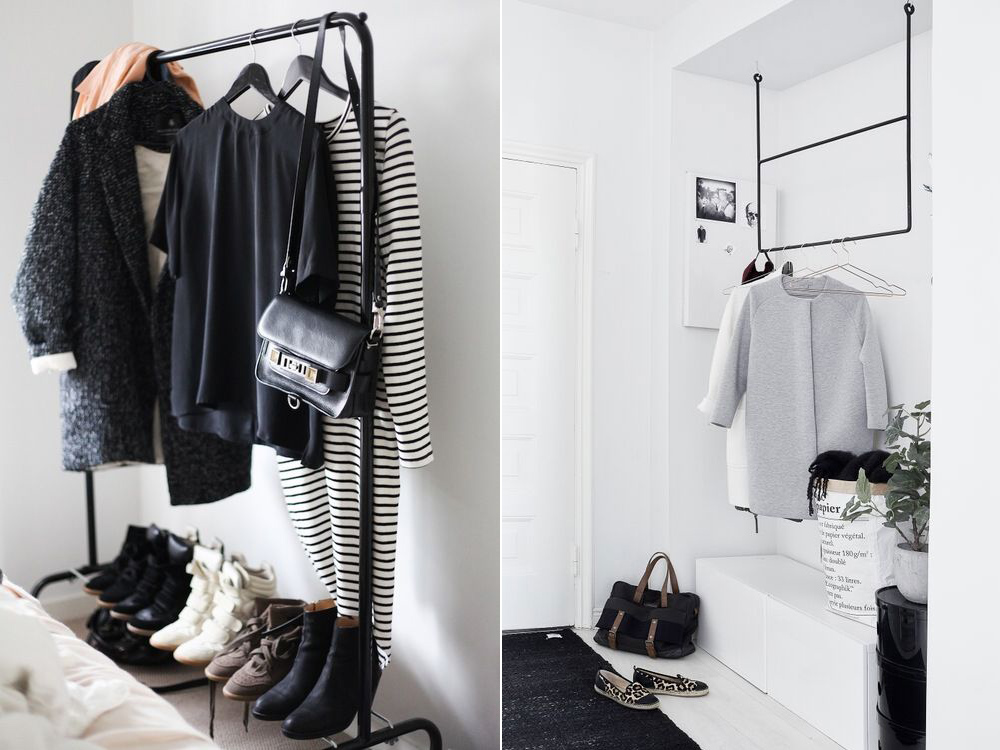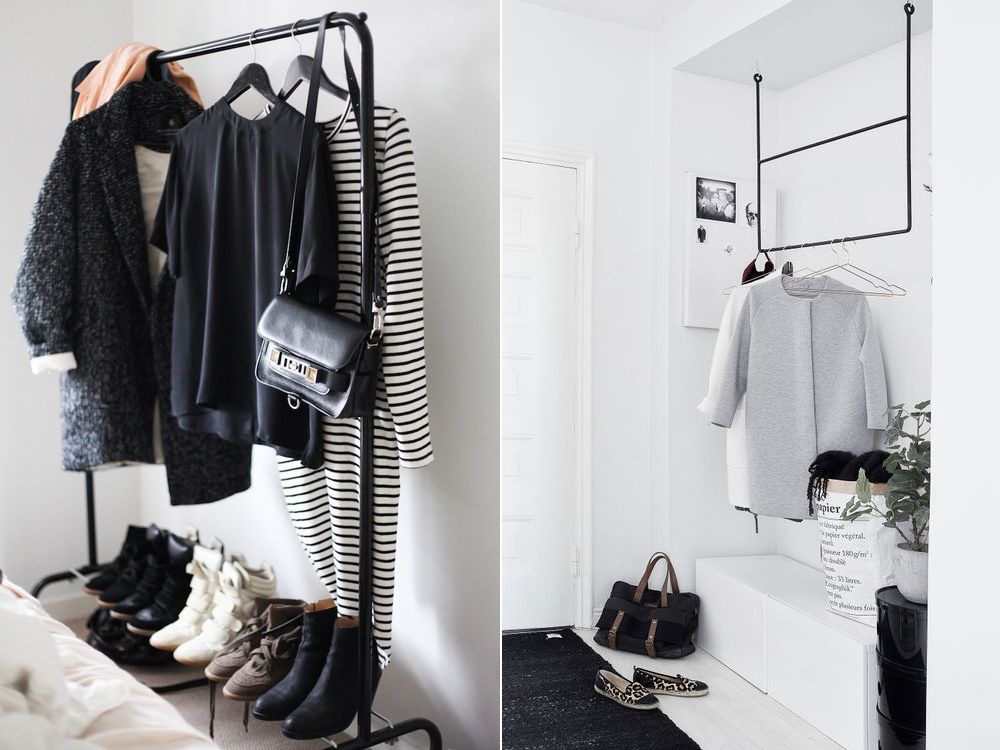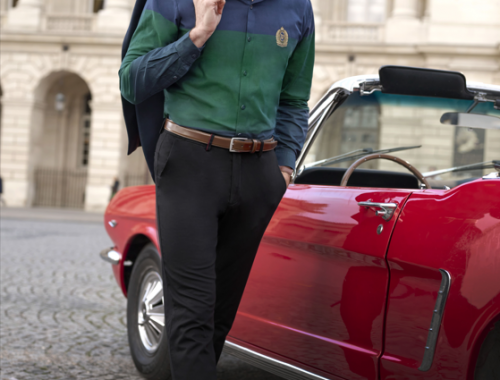
How to Build a Capsule Wardrobe
I just recently shared my fall/autumn capsule closet, and after more than a year and a half of living with less, I thought it was time to share with you a guide on how to build a capsule closet.
Capsule closets come in different shapes and sizes, so it’s important to choose what works best for you. It’s essentially a seasonally curated closet that allows you to express your personal style and effortlessly put together an outfit that makes you feel and look great. Remember, no two capsules are the same, and just because someone else is wearing it doesn’t mean you have to jump out and wear it (unless you want to, of course.)
Over the next three months, I will be narrowing my capsule down to 30 outfits. Based on my previous capsule, I’ve decided not to include shoes, handbags or accessories. I’m not a freelancer, a student, or work from home, so I need to make sure I have enough options to get me through three months in the office and on weekends.
As much as I love Project 333, I think it’s time to redesign the concept to fit my lifestyle, and I find 30 projects to be a happy medium. There’s plenty of wiggle room to add a few personalized pieces (if I want them ……) , while also building my core closet for the season.
So without further delay, let’s get started!

Step 1: Evaluate Your Wardrobe
If you’re building your first capsule closet, I suggest you start by assessing what you have in your closet. Take out anything you no longer wear, whether it’s because you no longer like the style, it doesn’t fit, or it’s just not flattering. I wrote a post about ways to pick out your closet and this is a great starting point.
It really helps to narrow down the focus of your closet and helps to make sure it’s filled with pieces you absolutely love.
Step 2: Choose your color palette
Personally, I work best when I’m working on a theme, and I’ve found that deciding on a natural color palette for my capsule is the best way to make sure that there’s a cohesive selection of outfits that are nicely interchangeable. This doesn’t mean choosing only black, white, and gray; quite the opposite. I’m partial to lemon yellow, blush pink, camel, cornflower blue, and the odd cherry red, and I think having at least a few pieces with a bit of color will help prevent your capsule from feeling a bit stale once you reach two months.
If you want to get a better idea of how to choose a color palette then you can read my blog post here.
It may feel a little limiting at first, especially if you have a color wheel color palette in your closet, but narrowing down your focus will greatly help you to make sure you’re starting in the right direction and know where to begin. Once you dive into it, you’ll find that this structure will also make it easier to fill in the gaps, as it allows you to be more specific about what parts are missing.
Step 3: Start with the basics
Start It is important to ask yourself: what will the weather be like in the next three months? What types of events will you be attending? and What are the must-have items for my closet that I can’t stand to live without?
In this step, you will determine the essence of your personal style and use it to create the foundation of your capsule, or the starting point for many of your outfits in the coming months.
For me, this almost always includes: denim (either shorts or jeans), cute skirts, silk camisoles or tank tops, sleeveless or long-sleeved shirts, long cardigans, and loose-fitting t-shirts. These are classic pieces that can be paired with almost any other piece I decide to include in the capsule. It may look very different to you, but again, it’s all about making sure your style shines.
Deciding how many tops, pullovers, skirts, dresses, pants, and jackets to include in your capsule can be the trickiest part, and there’s no one-size-fits-all approach. You may prefer to wear dresses almost every day instead of a monokini, or maybe you’re a denim girl through and through. I suggest you look at what you wear each week. If it helps, you can keep track of your outfits for two weeks and use that as a framework for determining how many pieces you need in each category.
Given that you may need to pick up a few pieces to complete your capsule, you can always make adjustments. Don’t forget to make sure you’re considering the advantages of items that can only be dry-cleaned, and that you can hand-wash or launder.
If you already have a defined style or a closet full of high-quality essentials, what you already have will likely make up most (if not all) of your capsule closet for the season ahead.
Step 4: Plan out the lack of
What The capsule doesn’t always come together overnight (although stuffing your closet with a bunch of staples will certainly help), and you can’t expect to find all the pieces you’ll be happy with overnight. There’s a lot of trial and error, and as the saying goes, good things come to those who wait.
So, now that you’ve mapped out most of your capsule, it’s time to start looking at what’s missing. Determining what you need to complete your closet can sometimes be a matter of scanning what you have, but I’ve found that gathering inspiration in one place (on Pinterest, for example) can be a great starting point. I tend to save a lot of my favorite “looks” to my laptop, and a quick glance will tell you that I love neutrals (especially creamy beige and Parisian stripes), fun embellishments (feathers and sequins – yes please), and quirky prints! Singletons. If you’re like me, the theme should be pretty obvious, and it shouldn’t take long to figure out which elements of these images appeal to you the most (and, by proxy, disappear from your closet)!
I’ve talked about the concept of uniforms in the past, and this process can also serve as an identifier for the combinations you see yourself wearing or wanting to wear. After you’ve planned out what you need, the fun (or tedious – depending on who you’re asking) part comes next – the shopping.
I avoid anything that suggests buying any missing pieces a short time before the capsule begins. Instead, I find it more useful to start with the core capsule – whether it’s 75-90% of your total – and build it up over time. The way we shop has changed; it’s not always feasible to buy full price, and often, new pieces drop off with the seasons, which may be better suited to your quest. Stick to the brands you know and look around from time to time to see if there are any that match your quest.
Step 5: Break it down into categories
While I do work in a creative office, I won’t be showing up in sweatpants anytime soon. I like to look organized and relatively professional – you never know who might pop into the office.
As a result, I tend to focus on building my capsule using the following split; 30% for weekend or ‘play’ wear, 20-30% is allocated to what I call multi-purpose pieces that can be used for work or play, and the final 40-50% is allocated to work wear.
Depending on your profession, your lifestyle and your preferences, your own breakdown will look a little different. If you’re finding it a little hard to fall back on, I recommend keeping a journal of what you wear over a two-week period and using that as a template for what type of clothing you’ll need for the next few months. Keep in mind what types of events you’ll be attending, where you’ll be going (whether it’s to school/university, to the office, or just a casual day at home), what the dress code is, and what the weather is expected to be like.
Keep in mind the pieces you wear almost every day; if it’s winter, would you rather wear the same jacket all season long, or do you prefer to alternate them to extend their life? Do you wear the same type of shoes every day? Is there a silhouette you’re constantly drawn to?
Use the answers to these questions as a guide, and don’t feel like you should put something in your closet – like pants – if you never really wear them.
Step 6: Know Your Preferred Look
Finally, having a uniform, or a few go-to outfits you can wear will make all the difference. Try it out, play around with your capsule closet and come up with some different looks that make you feel confident. If it helps, take some snapshots so you can refer back to them later.
If I’m feeling a little stuck, I’ll wear a button-down silk blouse with an A-line skirt, or my Karen Walker ruffled t-shirt with a pair of pants and some heels; these looks are pretty simple, but whenever I wear any of these combinations, I always feel really good about how I look.
You May Also Like

Dress to Impress: Mastering the Smart Casual Dress Code
05/11/2024
New Products
05/17/2024

